| In Progress |  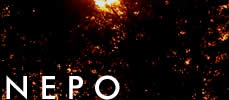  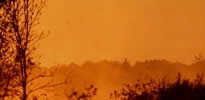 |
|
THINGS THAT JOIN THE SEA AND THE SKY SOUNDS TRUE, NOVEMBER 1, 2017 Order from an online bookseller:
Amazon
CITED BY SPIRITUALITY & PRACTICE AS ONE OF THE BEST SPIRITUAL BOOKS OF 2017 THINGS THAT JOIN THE SEA AND THE SKY IS A NAUTILUS BOOK AWARD WINNER FOR 2017 As with the Tao Te Ching, one can randomly open any page in Things That Join the Sea and the Sky and there find a reward for living.
Please check out this short video in which I describe the book
REVIEWS Open this book. Read the table of contents. And let the magic and promise of this offering invite you into the depths of your own humanity. Allow the poetic soul of Mark Nepo to guide you. And then keep this guide on your nightstand as an oracle and a roadmap for living well. This book is pure gold. This book offers itself to you like an intimate conversation with a dear friend. Enjoy the beauty and the deep dives into life's varied meanings and mysteries. Mark Nepo's vulnerable and generous-hearted sharing from the depths of his inner explorations is irresistibly readable, reminding us of the importance of staying with ourselves unconditionally, trusting the moment-by-moment experiences that lead us to our awakening. The book sensitively and empathetically examines universal parts of the human experience—such as fear, death, love, happiness, and kindness—in an inviting way that compels the reader to follow. A rich source of comfort and courage for anyone who opens it. Nepo calls this book a "travelogue of my conversation with the Universe." It's common thread is buoyancy, sinking and being lifted, being tossed about and then being held again. It is comprised of brief reflections on resilience, grouped under 17 topics (Unraveling Our Fear, Navigating Trouble, Shedding Our Masks, The Strength of Our Attention). They are snapshots recorded in words. Written with the simplicity of a Koan, they each take on a mystical glow that connects the reader to the updraft that Nepo is describing. The book includes a short guide to daily journaling. Unnecessary. Nepo's short writings say everything there is to say about recording the hidden wonders of the world around us. Mark Nepo has suffered and feared until he has turned those demons into teachers and friends. He walks the tightrope between the most esoteric and the everyday. He is a master at keeping his balance and inviting others onto the line. Every page in Things That Join the Sea and the Sky is a poem. When poet Mark Nepo writes… our hearts skip a beat. In his new book, Things That Join the Sea and the Sky, he had me at the first sentence. He is the maestro of poetry and spirituality. Nothing I can possibly say here can touch the beauty of his command of prose. It is salve for the soul of the human experience. These journal entries from one of our favorite spiritual teachers encourage us to sail on a sea of possibilities. We find ourselves putting the senses on full alert, making the mind receptive, and being drawn into the spiritual practice of openness.
BOOK DESCRIPTION Beloved as a poet, teacher, and storyteller, Mark Nepo, the New York Times bestselling author of The Book of Awakening, has been called "one of the finest spiritual guides of our time," "a consummate storyteller," and "an eloquent spiritual teacher." His many books have been translated into more than twenty languages. In Things That Join the Sea and the Sky, the acclaimed poet-teacher shares bare and honest reflections drawn from his lifelong journals. This thematic non-fiction reader is comprised of 145 entries gathered and shaped over the last fifteen years. The book takes the reader through seventeen sections organized around archetypal thresholds we all face, including "Stopping the Noise," "Unraveling Our Fear," "The Gift of Deepening," The Practice of Relationship, The Reach of Kindness, and "The Radiance in All Things." Of the book, Mark says, "These pages are field notes on living, a travelogue of my conversation with the Universe, a mix of inner reflections, questions, and stories that have come to teach me how to be here. They contain raw moments of sinking and being lifted, intimate accounts of being thrust into feeling and depth, my stretching and wondering about my life and the lives of others in this ongoing push and pull with a Universe that holds us, then tosses us about, only to hold us again. Under every piece, I hope you feel the common song we're born to sing in our unique and very human way." At the end of the book, Mark shares an essay about the nature and gift of journaling, followed by journaling guidelines, and 100 journal questions to work with. All to encourage the reader to engage in their own conversation with the Universe through the art of journaling.
EXCERPTS QUIETING THE THIEVES
ETCHED
THE SYMMETRY OF KINDNESS
A CONVERSATION WITH MARK NEPO ABOUT HIS NEW BOOK, What aspect of living does this book address? Being human, we have an inner life that must find its home in the world. The content of this book explores how we do that and how our soul informs the world and how the world informs our soul. One of the gifts we're born with to do this is the practice of reflection and expression. As such, this book is for anyone, regardless of their vocation or calling, who wants to thrive and not just survive. The practice of the book focuses on the personal journal as a sturdy tool for inhabiting the life of our expression. What is the invitation of the book? To encourage the reader to engage in their own conversation with the Universe through the art of journaling, as a way to personalize and animate how they experience life and the world. What's the difference between journaling and keeping a diary? A diary records the narrative of events and circumstances we go through, a record of days. But a journal explores an inner conversation between our soul and life, between who we are and the unfolding Universe. Journaling is an ongoing inner practice through which the work of introspection keeps removing what's between us and life. All to keep us vital and to bring us alive. Just as we practice breathing constantly, we need a place to practice perceiving and feeling. The journal is one place to deepen our practice of being alive. How does the book empower transformation? At the base of all learning is wonder. The chief task of our age, as teachers, seekers, and students, is to reaffirm our experience of wonder as a way to re-establish our connections. I offer my process of transformation through the years as a starting point for the reader to explore their very personal inquiry into living a full life. By offering insight into the practice of journaling, the reader is offered a lifelong tool by which to understand their experience and to re-engage their wonder. Toward these ends, the book shares bare and honest reflections drawn from my lifelong journals, gathering 145 entries written over the last fifteen years. The book takes the reader through seventeen sections organized around archetypal thresholds we all face, including "Stopping the Noise," "Unraveling Our Fear," "The Gift of Deepening," The Practice of Relationship, The Reach of Kindness, and "The Radiance in All Things." At the end of the book, I share an essay about the nature and gift of journaling, followed by journaling guidelines, and 100 journal questions to work with. How does this book contribute to your larger body of work? From The Book of Awakening on, I've tried to offer a whole picture of the human journey, speaking whatever I know of truth while believing in my heart that life, for all its difficulties, is uplifting. And I've been committed to keeping each other company on this timeless journey we're all on. Admitting that I have no answers, I offer examples, not instructions. I believe we all seek this kind of company and find strength in it. Each book I retrieve and shape tries to articulate, a bit further, the physics of transformation and the practice of being wholehearted. This book personalizes this journey even more. I'm convinced that our personal journey is the practice ground for our spirit. All we need is very close at hand, though we often need each other to access the wisdom hidden in our troubles and our joys. How does your experience inform the book? I have been a student of all paths, a poet, philosopher, and teacher my whole life. And all my work has focused on the journey of transformation and the life of relationship. As a writer, I've kept a journal of one kind or another for fifty years. I began journaling as a way to map and make sense of the many voices I felt moving through me. Most of this book comes from the river of perception spilling from one journal into the next, awash with a lifetime of feelings and questions. That river spans dozens of handwritten notebooks—small, large, pocketsize, hardcover, soft cover. As such, these pages are field notes on living, a travelogue of my conversation with the Universe, a mix of inner reflections, questions, and stories that have come to teach me how to be here. Can you give examples of journals in history and a sample question we might explore in our journal? Yes. Imagine a lifetime class of gifted students from all eras, and you have them read Yeats' poem, "The Fascination Of What's Difficult." Then you ask them, in their journals, to identify and explore a process that fascinates them. In time, we would have a constellation of the remarkable journals written throughout history: Leonardo's notebooks, in which he conjectured accurately on the shape of the human fetus, centuries before the X-ray; Walt Whitman's Specimen Days, through which he recorded his life as a volunteer medic during the Civil War; Aldous Huxley's Doors Of Perception, in which he logged his experiments with mescaline; Anais Nin's Diaries, in which the inner workings of love flare back to Sappho; Freud's Case Studies, through which he launched the world into modern psychology; Goethe's Theory Of Color, where he kept a daybook of his experiments with how light and dark affect our perceptions; John Reed's Seven Days That Shook The World, in which he served as an eye witness to the Russian Revolution; Thoreau's Walden, in which solitude wrestled its integrity from the modern world; and of course, The Diary Of Anne Frank, that somber knell that cracked the human bell.
Notice that whether the ground of inquiry was science, the art of love, psychology, painting, alternate states of consciousness, history, or politics, the journal served them all. Adaptable. Durable. And so, as a question to enter, identify and explore a process that fascinates you.
Can you share an excerpt that contains an inner reflection? Sure. This is called "Quieting the Thieves." Today I am sad or so I thought. But more I am tired of keeping up with all that doesn't matter. I'm sipping coffee, listening to rain. I like watching the leaves hang in long weather. I like to close my eyes and feel the rain quiet the earth. I welcome that quieting. I like to have my habits of going here and there interrupted. I was caught in the rain when coming here. The cool blotches sink in all over. The many lists I carry in my shirt are wet. I take them out to dry and all the tasks have blurred. At last. Unreadable. Forgettable. We carry these lists near our heart and finger them like worry beads. It doesn't matter what is on them. They are the thieves and it is the insidious virtue to have everything in order before we live that is the greatest thief. I feel the rain drip down my neck. I think I'm becoming unfinished.
Can you share an excerpt that offers a story? Yes. This is called, "The Symmetry of Kindness." The train slammed into the station, injuring hundreds. The engineer was critically hurt. People toppled over each other, bouncing across seats and against windows. There was blood and glass everywhere. One woman shimmied her way to the platform when a part of the station ceiling fell, pinning her. She thought she would die. Then the hands of fellow passengers lifted her, one to another, and she was saved. Later, she wanted to say thank you but didn't know who to thank. Once on the mend, she retrieved a list of those who were with her that day. Now, one by one, she looks them up, asking if they had helped her. Each of them smiles and says no. Once with them, she can see what each needs, and so she helps them along. She unpacks groceries for an old woman, listens to a widower's story, and gives a single mom her umbrella. This has gone on for weeks. She keeps trying to find those who helped her, only to help those she finds. Finally, it occurs to her that this is God's symmetry of kindness. She will never know who helped her, so she can thank and help everyone she meets along the way.
What is your hope for anyone engaging with this book? This book contains raw moments of sinking and being lifted, intimate accounts of being thrown into feeling and depth, and how I've been stretched into wondering about my life and the lives of others in this ongoing push and pull in a Universe that holds us, then tosses us about, only to hold us again. Under every passage, I hope you feel the common song we're each born to sing in our unique and very human way. And that you feel empowered to create your own journaling practice as a way to listen more closely to life.
|



|
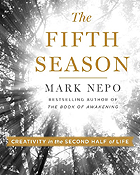
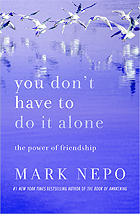
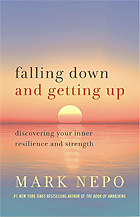
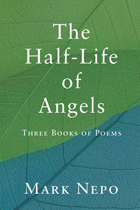
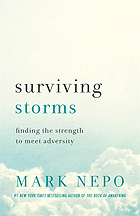
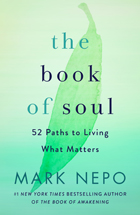


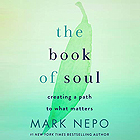
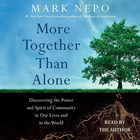
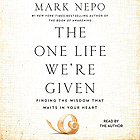
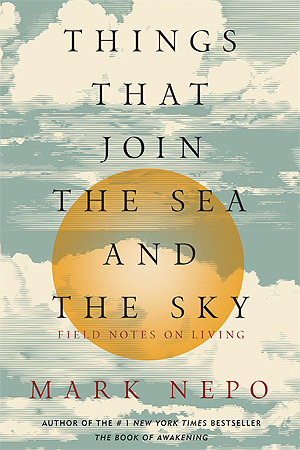
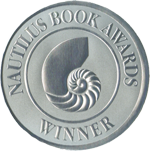
 Today I am sad, or so I thought. But more I am tired of keeping up with all that doesn't matter. I'm sipping coffee, listening to rain. I like watching the leaves hang in long weather. I like to close my eyes and feel the rain quiet the earth. I welcome that quieting. I like to have my habits of going here and there interrupted. I was caught in the rain when coming here. The cool blotches sink in all over. The many lists I carry in my shirt are wet. I take them out to dry, and all the tasks have blurred. At last. Unreadable. Forgettable. We carry these lists near our heart and finger them like worry beads. It doesn't matter what is on them. They are the thieves, and it is the insidious virtue to have everything in order before we live that is the greatest thief. I feel the rain drip down my neck. I think I'm becoming unfinished.
Today I am sad, or so I thought. But more I am tired of keeping up with all that doesn't matter. I'm sipping coffee, listening to rain. I like watching the leaves hang in long weather. I like to close my eyes and feel the rain quiet the earth. I welcome that quieting. I like to have my habits of going here and there interrupted. I was caught in the rain when coming here. The cool blotches sink in all over. The many lists I carry in my shirt are wet. I take them out to dry, and all the tasks have blurred. At last. Unreadable. Forgettable. We carry these lists near our heart and finger them like worry beads. It doesn't matter what is on them. They are the thieves, and it is the insidious virtue to have everything in order before we live that is the greatest thief. I feel the rain drip down my neck. I think I'm becoming unfinished.


